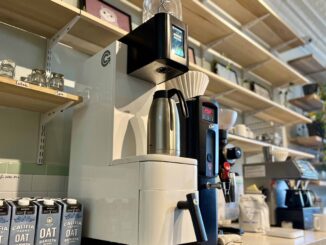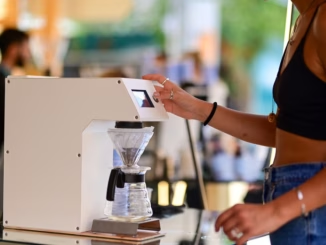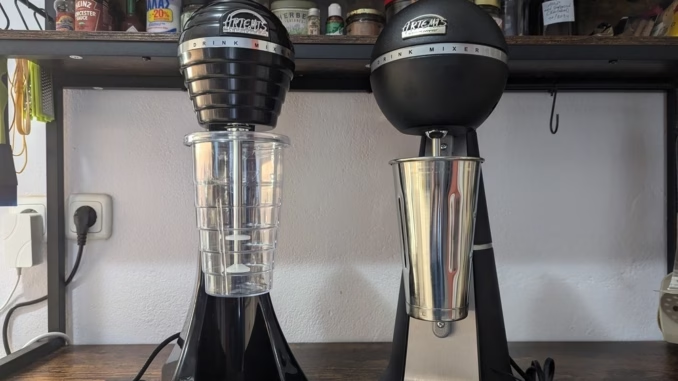
We test drive the A-2001 and MIX-2010 Drink Mixers by Greek manufacturer ARTEMIS.
BY VASILEIA FANARIOTI
SENIOR ONLINE CORRESPONDENT
Featured photo by Vasileia Fanarioti
When it comes to drink mixers, ARTEMIS is a name that has stood the test of time. Since the 1980s, this family-owned business, based in Greece, has been designing and producing high-quality tools for crafting beverages. With a focus on blending aesthetics and functionality, ARTEMIS mixers are made to cater to both professional and personal needs. As someone who appreciates the intersection of design and performance, I was eager to put two of their flagship models to the test: the A-2001 and MIX-2010.
These mixers promise durability, versatility, and innovative features—qualities that make them suitable for various environments, from cafés to home kitchens. What’s particularly interesting is how these models cater to different preferences, whether it’s the robust A-2001 or the lightweight MIX-2010. For today’s “Test Drive,“ let’s start with unboxing both models and taking a closer look at each one’s unique design and features.
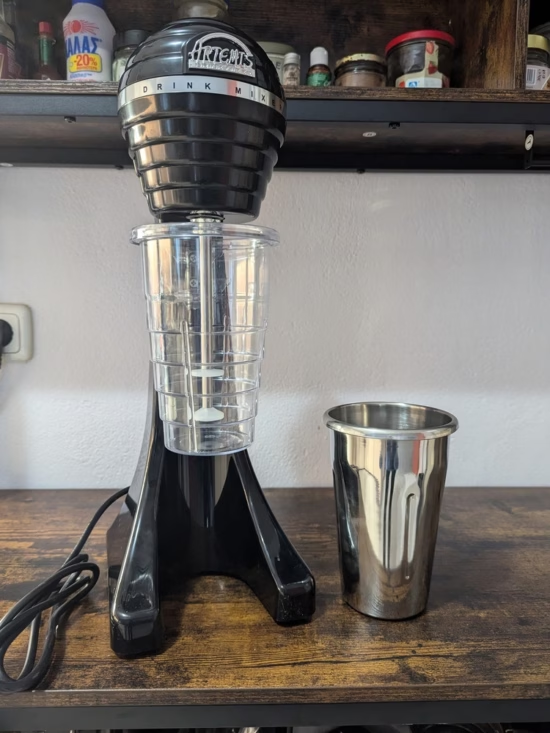
The Unboxing Experience
Unboxing the A-2001 and MIX-2010 was a revealing experience. The A-2001, made from high-endurance aluminum and stainless steel, is undeniably hefty, weighing in at 5.8 kg. Its sturdy build and polished finish reflect its professional-grade quality. The variety of available colors—from classic tones to trendy mattes—adds a level of customization, making it easy to match with different interiors. In contrast, the MIX-2010 felt significantly lighter at 3.4 kg, thanks to its high-density ABS plastic construction. This model has a more modern and approachable design, with eight vibrant color options. While it’s less weighty, it doesn’t compromise on durability, making it a practical choice for everyday users.
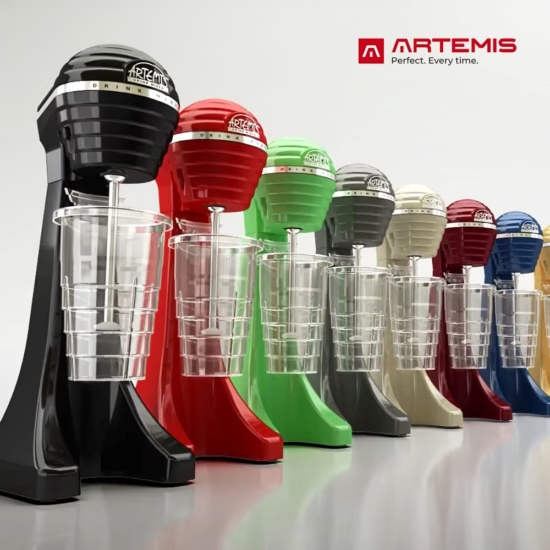
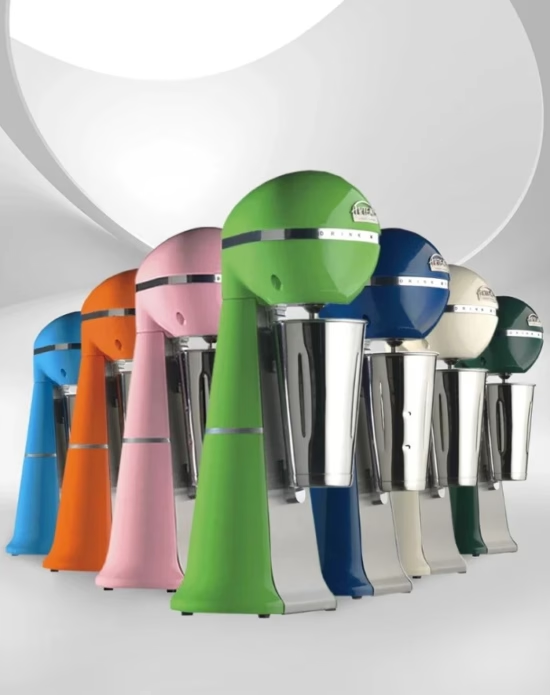
Both mixers come equipped with multiple propellers—stainless steel and plastic options—to accommodate various mixing needs. Each one also features a lower container support with a two-notch stem, enabling a hands-free experience. This innovation makes the mixers not only user-friendly but also incredibly versatile for a variety of containers, accommodating cups from 11 to 18 centimeters in height.
Technical Specifications
Here’s a breakdown of the key specs for each model:
ARTEMIS A-2001 Drink Mixer
- Power: 350 watts
- Voltage: 220/230 volt, 50/60 Hz
- RPM: 15,000–22,000
- Switch: 2-speed waterproof
- Material: Aluminum and stainless steel construction
- Cup Options: 900 ml stainless steel and transparent plastic cups
- Operation: Manual and super-automatic modes
- Dimensions: H47 x W18 x D22 cm
- Net Weight: 5.8 kg
MIX-2010 Drink Mixer
- Power: 350 watts
- Voltage: 220/230 volt, 50/60 Hz
- RPM: 15,000–22,000
- Switch: 2-speed waterproof
- Material: High-density ABS plastic
- Cup Options: 900 ml stainless steel and transparent plastic cups
- Operation: Manual, automatic, and super-automatic modes
- Dimensions: H46 x W16.5 x D18 cm
- Net Weight: 3.4 kg
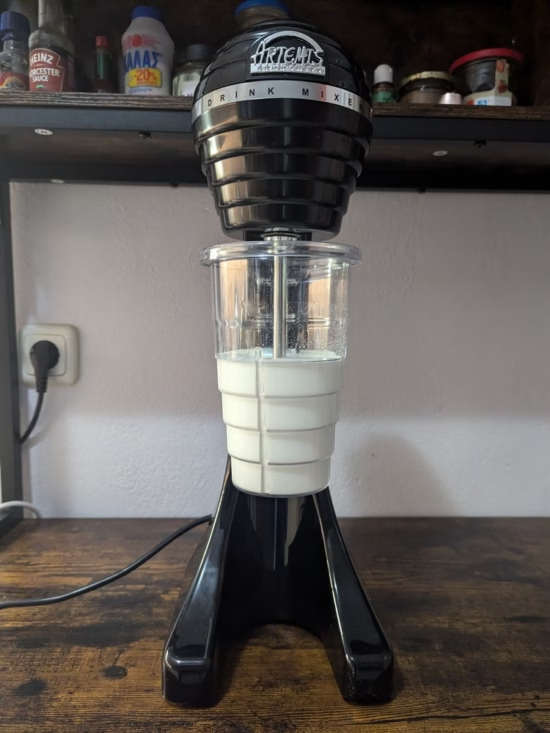
Testing Begins: Making a Freddo Cappuccino
As I began to explore the functionalities of both models, I chose to test the mixers by making a classic whole milk freddo cappuccino with each one. The setup of the ARTEMIS A-2001 was efficient; its substantial weight gave me confidence in its build quality. After placing the cup on the hands-free support, I activated the super-automatic function. Almost immediately, the mixer sprang into action, frothing the cold milk into a rich, velvety foam. The texture was impressive: light and airy, yet dense enough to hold its shape atop the espresso.
Using the MIX-2010 was also a breeze. It managed to create an impressive froth, rivaling that of the A-2001. I found the controls user-friendly, allowing me to easily switch between manual and automatic settings. This aspect may appeal particularly to users who value simplicity and ease of operation. However, I noted that it may require a bit more balance, especially when frothing larger quantities—something to consider for users with high demands.
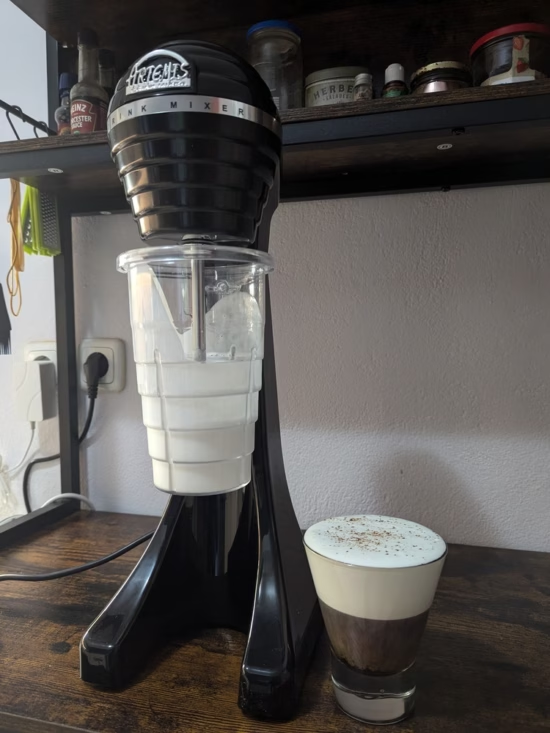
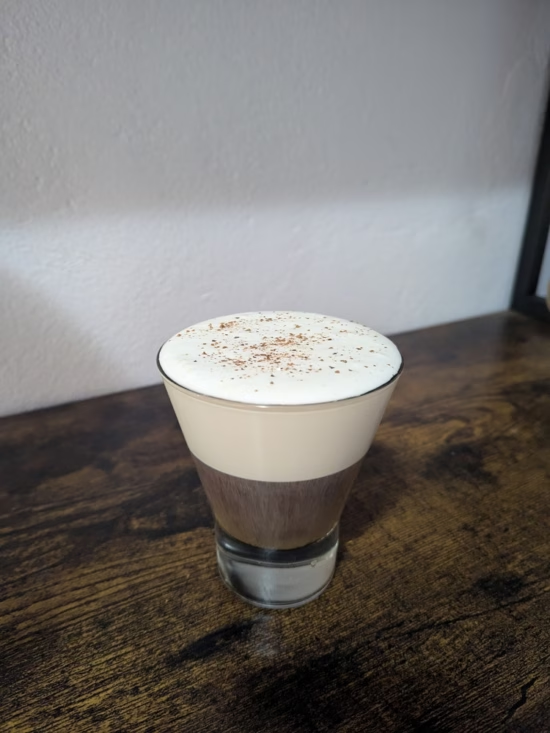
Photo by Vasileia Fanarioti.
One notable aspect was the noise produced during operation. As the A-2001 whirred away, its low, resonant hum felt powerful and professional. Conversely, the MIX-2010 was a bit noisier, producing a higher-pitched sound that might stand out more in a quiet environment. While this could be seen as a consideration for those using the mixer in serene settings like home kitchens, it didn’t affect its performance.
After using both models to make a freddo cappuccino, I was eager to try each one out with a variety of other beverages. I wanted to see if both mixers could meet the diverse needs of coffee enthusiasts and businesses alike.
Stay Tuned for More
Tomorrow, we’ll release part two of this “Test Drive,“ where we’ll delve deeper into the mixers’ performance with different types of milk and milk alternatives, exploring their versatility and capabilities in crafting everything from signature beverages to culinary creations.
ABOUT THE AUTHOR
Vasileia Fanarioti (she/her) is a senior online correspondent for Barista Magazine and a freelance copywriter and editor with a primary focus on the coffee niche. She has also been a volunteer copywriter for the I’M NOT A BARISTA NPO, providing content to help educate people about baristas and their work.
Subscribe and More!
As always, you can read Barista Magazine in paper or digital format. Read the December 2024 + January 2025 issue for free with our digital edition.
And for more than three years’ worth of issues, visit our digital edition archives here.




